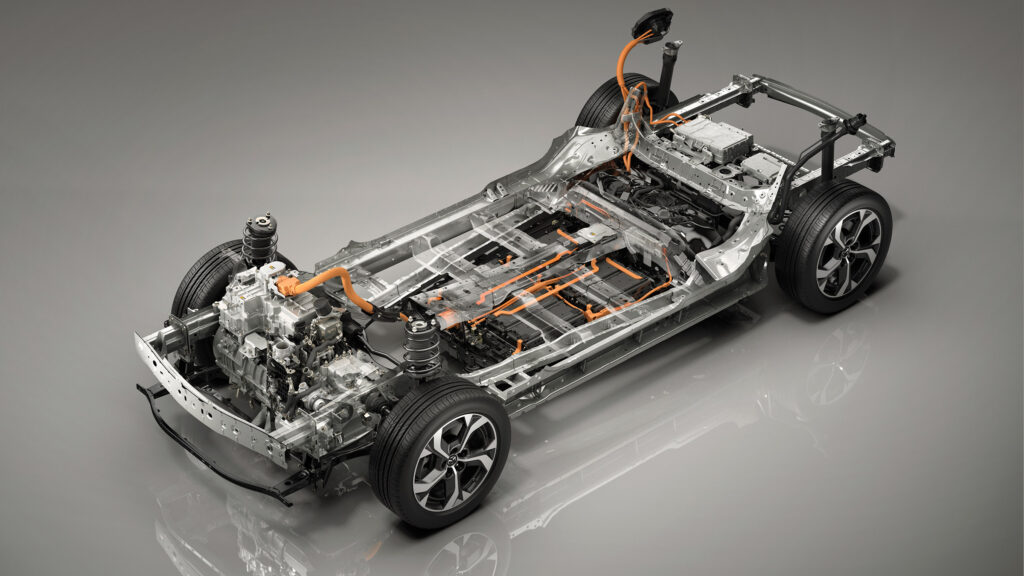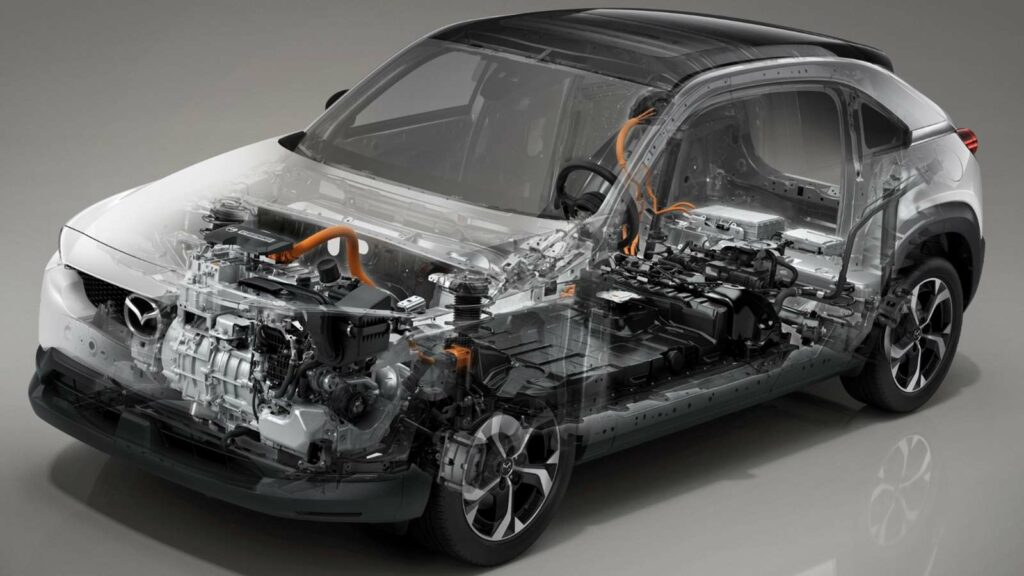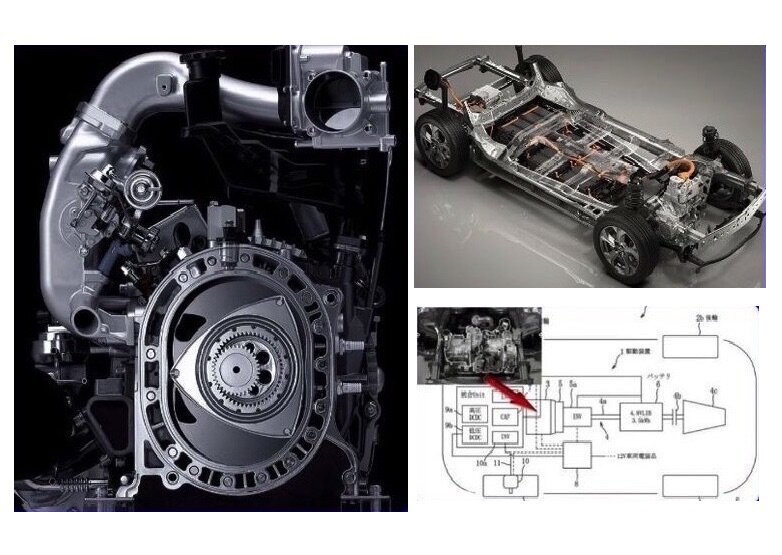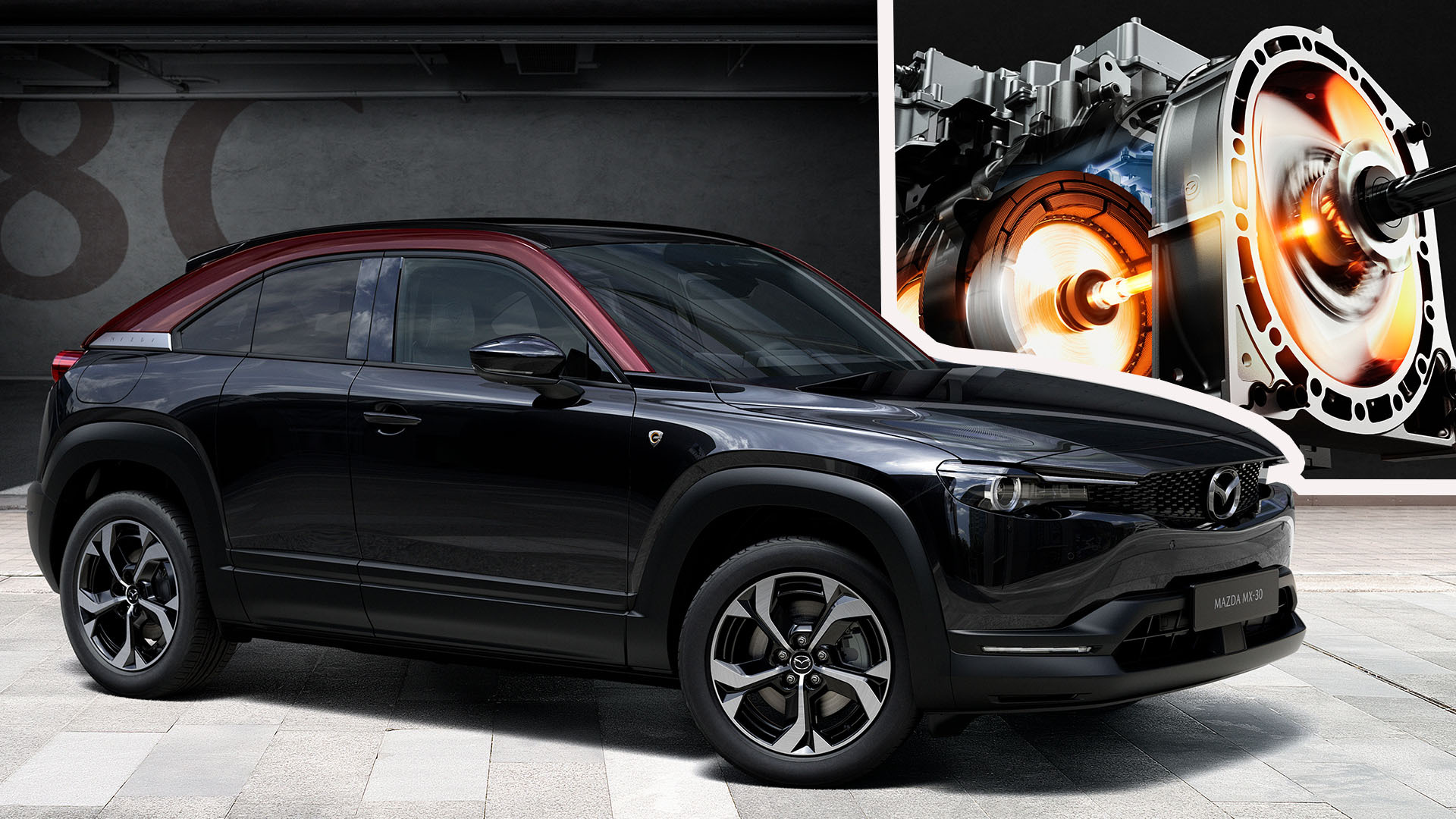Mazda has recently launched a new rotary engine in their MX-30 crossover SUV, rather than in a sports car, leaving many car enthusiasts disappointed. The MX-30 e-Skyactiv R-EV was revealed at the Brussels Motor Show and offers a claimed 85km of pure electric range, with the rotary engine serving as a range-extender and booster.
Mazda chose to use a rotary engine in the MX-30 because of its compact size compared to traditional piston engines. Additionally, Mazda has been eager to revive its signature rotary technology in the electric age, specifically as a generator instead of a drive unit. The MX-30 e-Skyactiv R-EV operates as a series hybrid, meaning the rotary engine generates charge for the electric motor rather than directly driving the wheels.
Despite the exciting new technology, the MX-30 e-Skyactiv R-EV may not be available in Australia in the near future. Mazda’s local division stated that the company introduces models and powertrains to markets based on a multi-solution strategy that considers regional differences in energy production, environmental regulations, and customer needs. Instead, the focus for Australia this year is on launching new large platform hybrid models in the CX-60 and CX-90, as well as updates across key model lines.



The MX-30 e-Skyactiv R-EV has a 17.8kWh lithium-ion battery that powers the 125kW and 260Nm front motor, and it’s capable of a claimed 9.1 second 0-100km/h time. The battery is the same as the one used in the larger CX-60 PHEV. Once the battery is depleted, the rotary engine with a 50L fuel tank kicks in.
Mazda’s decision to release the new rotary engine in an SUV rather than a sports car is a disappointment for car enthusiasts. However, the new rotary technology is exciting and offers unique benefits in terms of compact size and functionality as a generator.
It remains to be seen if and when the MX-30 e-Skyactiv R-EV will be available in Australia, but it will be interesting to see how the future of rotary engines develops in the electric age.

